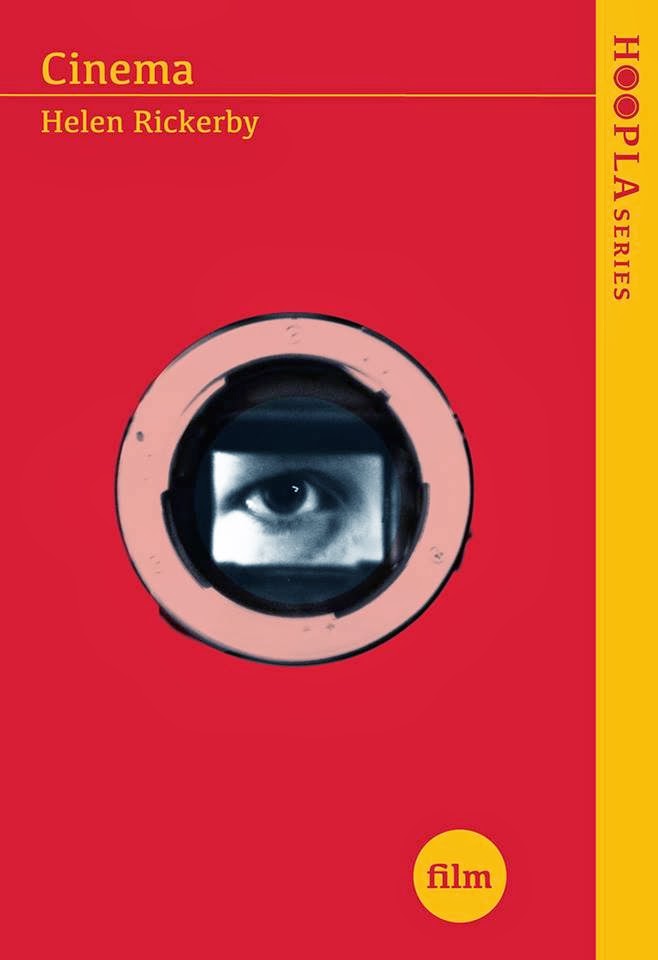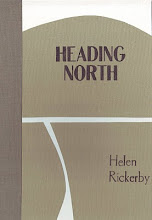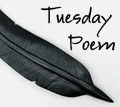When I did my reading at the Poetry Society in October, the last poem I read was 'Artemisia Gentileschi'. It's a long poem, and each section refers to a painting of hers - in describing it, she's kind of telling the story of her life. When I wrote it I hoped that the reader would be able to imagine the paintings in their mind from what I described - at least enough for the poem to work. And I think people can, but the twice I've performed this with slides of the paintings projected behind me, I've got a really good reaction.
Recently I got an email from an English lecturer from Vienna who is going to be teaching a course about fictional biographies. She'd come across a mention of 'Artemisia Gentileschi' and wanted to know where she could get her hands on it. That course seemed right up my poetic alley, so I sent her my book. Students in Vienna might be studying my work!
Both of these things had led me to think that it might be helpful to link the paintings with the poem. Rather than breaching anyone's copyright by including the images on this blog, I'm going to link the titles of sections to the painting it refers to. Hopefully it will add a new element to the poem. (Links should open in a new tab or window.)
Artemisia Gentileschi, 1593–circa 1642
Woman Playing a Lute, circa 1610
She seems naïve to me now
holding the lute
across her body
as she looks
towards the sky
My father taught
me to paint
‘You are very precocious’
he said, ‘for a girl’
but he thought some extra
tuition in technique
would be beneficial
And Tassi certainly taught me
I learned my lesson well
Susanna and the Elders, 1610
Susanna is a serpentine S
as she twists away
from the gaze
from the faces of the
lechers, one old
one younger
They taunt her, they
whisper as they refuse
to share the paints, as they
leave her only the worst brushes
‘Hey girl,’ they say, ‘I’d like
to get a lick of you’
‘She can’t be a virgin
just look at that mouth’
The other men, the judges
heard evidence that
indeed I was a virgin
until, by force
and I swore to it as they tightened
the thumbscrews
Tassi was out of jail
by the next time it rained
Judith Slaying Holofernes, 1612–1613
Your eye is drawn
to the place where their arms
all meet
Holofernes, the tyrant
lies back, tangled
in the sheet while
Judith, with calm
precision, slices off
his head
Abra, her maid, has the trace
of a smile
as she holds him down
The blood on the bedclothes
is the same colour
as Abra’s dress
You may note
that Holofernes
bears a striking resemblance
to Tassi
Judith and Her Maidservant, circa 1613–1614
Judith and Abra
have done their deed
and changed their clothes
Tassi’s head
is in a basket, his blood leaks
between the weaving – a detail
of which I am especially proud
Judith and Abra
are escaping
the enemy camp, but
hearing a sound
they look back, out of the painting
to the right
The sword is flung
casually over my shoulder
They will escape
unharmed
Jael and Sisera, 1620
Jael was a heroine
of the Israelites
a woman of action
She isn’t afraid
of getting her hands dirty
getting a bit of blood
on her saffron dress
Sisera appears to be asleep
almost curled
on her lap, his head resting
on his arm
Jael’s hammer almost
disappears at the top
of the canvas, her arm stretched up
and the tent peg resting
below his right ear
The pounding is about to begin
Judith Beheading Holofernes, circa 1620
There is more force
this time
and the blood spurts
like a fountain, staining
the sheets
I admit
I still have some issues
Lucretia, circa 1621
Lucretia was a woman of honour
a virtuous wife
who couldn’t bear the shame
She kneels on the bed
her knee and shoulder
catching the light
She looks skyward, like
the lute player, but she contemplates
not God but her dagger, glinting
in the shadows, that she holds
in her left hand
She grasps her tempting breast
and imagines plunging
the knife through and into
her heart, over and over
again and again
until she is split
with the pain, she’ll kick
and bite and bloody
the bedclothes, cry
for it to stop stop
stop and then
in the next moment she will not
as the story would have you believe
make herself a victim
again – instead she will throw down the blade
draw her petticoat closed
put on her dress
and go back
to her studio
Self Portrait as the Allegory of Painting, 1630
My shoulder
in my favourite green gown
protrudes from the picture plane
towards you
I am paused, caught
in the act of painting
I am both artist and model
both creator and muse
a perfect synthesis
Igegno – a genius light
strikes my forehead
My painterly arm
is strong
30 December 2009
29 December 2009
End of the year
And, in fact, the end of the decade. This probably comes as no surprise to you, but it keeps on surprising me. How did this decade go so fast? It was the fastest decade ever. Crazy! I guess I've done some stuff and all, but surely not a decade's worth.
At the end of every year (and around my birthday, and around pretty much any other opportunity) I reflect on stuff that I've done, and stuff that I want to do, especially related to writing. This is generally a little bit depressing (is that all I've done?) but also hopeful as I think about what I'm planning to do. And now I have to start doing it, or perhaps not until Friday.
My major writing goal for the year is finish Cinema, and also to submit more poems to journals (only one submission in the last six months? Feeble!).
What are yours?
At the end of every year (and around my birthday, and around pretty much any other opportunity) I reflect on stuff that I've done, and stuff that I want to do, especially related to writing. This is generally a little bit depressing (is that all I've done?) but also hopeful as I think about what I'm planning to do. And now I have to start doing it, or perhaps not until Friday.
My major writing goal for the year is finish Cinema, and also to submit more poems to journals (only one submission in the last six months? Feeble!).
What are yours?
13 December 2009
Coming back to myself
(Weirdly, after writing the first draft of this, I found I’d written a very similar post around this time last year – perhaps its part of my annual cycle - though it does make me think that I haven't learned anything.)
For most of this year a lot of my non-day-job work has been publishing stuff – I’ve been wearing my publisher hat with JAAM magazine, and as Seraph Press I’ve published a record two books this year – Watching for Smoke by Helen Heath, and Ithaca Island Bay Leaves: A Mythistorima, by Vana Manasiadis. (I’ve previously averaged about one book every year-and-a-half.) And it isn’t that my publishing responsibilities are over – there’s still my attempts at publicity and distribution for those aforementioned publications, and the next issue of JAAM to prepare for, but ever since I signed off the print proofs for Ithaca I started feeling like it was time to take a look at my own writing again, and, even, that I had a little bit of spare time in which I could do that. Since then I’ve written a few things – mostly poems and mostly fairly mediocre, but that’s ok. I think what what to do now is take stock of where I’m at, and what I have.
One of my goals for this year was to have finished a draft of Cinema – my movie-inspired poems that I hope will become my next collection. I’m pretty sure I haven’t done that – I think I probably have enough-ish poems, but not enough poems that are good enough, and that work together to do what I want them to do. What I want them to do is work individually and together to create something of meaning.
When I started on this project I was kind of steering clear of the personal in my poetry. I’ve been reluctant to write too much about myself, because it feels self-indulgent. I guess that probably comes from having written so many dreadful teen-angst poems about how I felt (usually misunderstood, disappointed, unappreciated and frequently infatuated). But lately, considering what I really love in other people’s poetry (and even some of my own) is when they manage to turn personal stories or details into something bigger than themselves. I’ve appreciated that in both the books I’ve just published. The personal can give you, the reader, something to connect to (though it can also alienate you, of course, if it doesn’t work for you). I think that connection is maybe what I want a bit more of in Cinema.
Something I didn’t expect to do this year was write a long poem sequence about a (literal and kind of psychological) journey. But I did. In one day. One of my next tasks is to revise that and then kick it out for a reader or two to have a read of it, and then see what is to be done with it.
Another thing I need to do is send out some more submissions to literary journals – it’s been a while.
And I think it’s time to restart my ‘weekly’ writing reports to Clare (my last one was in August – I think they were mostly sort of bi-monthly before that). I find they help me keep track of what I’m up to and keep me motivated.
So, yeah, I’m back on the wagon.
For most of this year a lot of my non-day-job work has been publishing stuff – I’ve been wearing my publisher hat with JAAM magazine, and as Seraph Press I’ve published a record two books this year – Watching for Smoke by Helen Heath, and Ithaca Island Bay Leaves: A Mythistorima, by Vana Manasiadis. (I’ve previously averaged about one book every year-and-a-half.) And it isn’t that my publishing responsibilities are over – there’s still my attempts at publicity and distribution for those aforementioned publications, and the next issue of JAAM to prepare for, but ever since I signed off the print proofs for Ithaca I started feeling like it was time to take a look at my own writing again, and, even, that I had a little bit of spare time in which I could do that. Since then I’ve written a few things – mostly poems and mostly fairly mediocre, but that’s ok. I think what what to do now is take stock of where I’m at, and what I have.
One of my goals for this year was to have finished a draft of Cinema – my movie-inspired poems that I hope will become my next collection. I’m pretty sure I haven’t done that – I think I probably have enough-ish poems, but not enough poems that are good enough, and that work together to do what I want them to do. What I want them to do is work individually and together to create something of meaning.
When I started on this project I was kind of steering clear of the personal in my poetry. I’ve been reluctant to write too much about myself, because it feels self-indulgent. I guess that probably comes from having written so many dreadful teen-angst poems about how I felt (usually misunderstood, disappointed, unappreciated and frequently infatuated). But lately, considering what I really love in other people’s poetry (and even some of my own) is when they manage to turn personal stories or details into something bigger than themselves. I’ve appreciated that in both the books I’ve just published. The personal can give you, the reader, something to connect to (though it can also alienate you, of course, if it doesn’t work for you). I think that connection is maybe what I want a bit more of in Cinema.
Something I didn’t expect to do this year was write a long poem sequence about a (literal and kind of psychological) journey. But I did. In one day. One of my next tasks is to revise that and then kick it out for a reader or two to have a read of it, and then see what is to be done with it.
Another thing I need to do is send out some more submissions to literary journals – it’s been a while.
And I think it’s time to restart my ‘weekly’ writing reports to Clare (my last one was in August – I think they were mostly sort of bi-monthly before that). I find they help me keep track of what I’m up to and keep me motivated.
So, yeah, I’m back on the wagon.
12 December 2009
Places to buy Ithaca
 Excitingly, you can now buy Ithaca Island Bay Leaves: A Mythistorima by Vana Manasiadis not only from me, and from the wonderful Unity Books in Wellington, but also from the PaperGraphica website. PaperGraphica is the gallery that represents Marian Maguire, who is the artist whose work features on the front cover of the book, and amongst whose artwork we launched Ithaca last week. Hopefully some people who are interested in Marian's art might be interested in Vana's book.
Excitingly, you can now buy Ithaca Island Bay Leaves: A Mythistorima by Vana Manasiadis not only from me, and from the wonderful Unity Books in Wellington, but also from the PaperGraphica website. PaperGraphica is the gallery that represents Marian Maguire, who is the artist whose work features on the front cover of the book, and amongst whose artwork we launched Ithaca last week. Hopefully some people who are interested in Marian's art might be interested in Vana's book.It's particularly cool, because Vana is listed as one of the artists. The other cool thing is that because it's an e-commerce site, from this page about the book people can just click 'purchase, and buy it. I hope lots of people do!
Also, you could waltz in to your local bookshop and ask them to order it for you. They might want to know the ISBN, which is: 978-0-473-15235-2.
03 December 2009
Ithaca launched
 The author arrived from Crete on Monday, the book arrived from the printers on Tuesday, and we launched Ithaca Island Bay Leaves: A Mythistorima by Vana Manasiadis on Wednesday - last night. It was great.
The author arrived from Crete on Monday, the book arrived from the printers on Tuesday, and we launched Ithaca Island Bay Leaves: A Mythistorima by Vana Manasiadis on Wednesday - last night. It was great.The Adam Art Gallery was the perfect venue, as the launch took place among Greek vases and Greek-vase-inspired lithographs (by Marian Maguire, whose artwork, as I've said before, graces the cover of Ithaca).
Damien Wilkins, who was the course convener of Vana's masters in creative writing class, launched the book. He had been around during its genesis, and so it was appropriate he should send it out into the world. He'd read it in its earlier incarnation as Vana's masters portfolio, and said that, reading it again, it seemed to have gotten younger. I think I know what he means. While it was almost all there in that earlier form, the work Vana has done on it over the last few years have made each poem sharper, more of what it is.
Vana got lots of compliments on her poems, and I got lots of compliments for how beautiful the book looks, Marian (who was able to be at the launch, which was lovely) got lots of compliments about her artwork (both on the wall and on the book), and me and my mum got lots of compliments about the catering. Yay!
Thanks to all who came and celebrated with us, and thanks for buying so many books. I really hope this book finds the audience it deserves (a big one), and we've made a good start so far.
Copies of Ithaca are now available from Unity Books in Wellington (I dropped them off today), can be ordered through bookshops, or can be ordered directly through me (email me at seraphpress@paradise.net.nz).
Ok, it's been an exhausting week, and now it's time to go to bed...
Subscribe to:
Posts (Atom)





